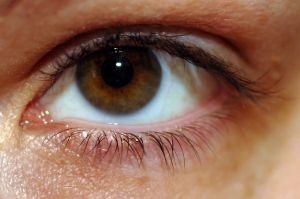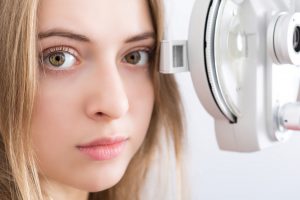The eye is a sensitive part of our body, and if not cared for correctly, it can cause many complications. One such complexity that is seen in older people is Cataract. It interferes with the healthy eyesight of a person. Here is all the info you may need about this condition and its treatment.
What is a Cataract?
The eye consists of a pair of lenses which are naturally clear. It helps in focusing the rays of light that enters the eyes onto the light-sensitive tissues called the retina. The retina then converts the light into signals carried by optic nerve into the brain. It is essential for the lens to be clear to get a clear image.
Cataract is an eye disease which causes the lens to appear cloudy or dense which interferes with the vision. The opaque lens will lead to the formation of an image that is blurry or distorted. The formation of cataract on the lens is due to the clumping of the protein present in the eye. This condition is known to develop slowly and with age. Older people are the most affected by this problem, and there are good chances of it affecting both the eyes but not at once. Cataract is a condition that develops within the eye and cannot spread between both eyes or between people.

Surgeries have successfully restored the normal vision in a lot of people but can still lead to blindness in some cases.
Types of Cataract
Cataracts are of different types:
- Nuclear cataracts involve the middle part of the nucleus of the lens and change its color to yellow or brown.
- Cortical cataracts are seen around the edge of the nucleus are wedge-shaped.
- Posterior capsular cataracts affect the back of the lens and forms faster than the types mentioned above.
- Congenital cataracts are not very common as the other forms and are usually seen in babies within the first year of birth.
- Secondary cataracts are usually formed as a result of a disease or medication. Glaucoma or diabetes are the two conditions that could lead to the formation of cataract. Medicines like the steroid prednisone also contribute to the formation of cataract.
- Traumatic cataracts are always a result of any injury to the eye which develops after a long time.
- Radiation cataracts are a result of undergoing a radiation therapy.
Related Article: Visual Impairment Causes Symptoms and Prevention
When to visit the doctor?
Nashville Eye Doctor, Dr. Durocher, recommends seeing an optometrist if you notice any of the following symptoms:
- Blurred vision
- Trouble seeing at night or dark
- Colors seem faded
- Increased sensitivity to light and glare
- Appearance of halo surrounding the lights
- Double vision in the eye that is affected
- Requirement for changing prescriptions frequently
- Fading or yellowing of colors
What causes the Cataract?
Many causes could lead to Cataract. These include:
- Overproduction of oxidants
- Smoking
- Exposure to an ultraviolet radiation
- Radiation therapy
- Trauma
- Certain conditions like Diabetes
- Long-term usage of medications like steroids
Treatment for Cataract
If you are not interested in undergoing surgery, you can consult your doctor to know how you can manage your symptoms. There are stronger eyeglasses, sunglasses or magnifying lenses with anti-glare coating available as a method of managing the symptoms.

Surgery
When cataract reaches a stage where it prevents you from doing your daily activities like reading or driving, the doctor will recommend surgery. Surgery is also usually recommended when this condition interferes with the treatment of other problems of the eye.
Phacoemulsification is the surgical procedure which uses the ultrasound waves to break the lens and remove all the pieces. Extracapsular surgery is the procedure in which a long incision in the cornea is done to remove the cloudy part of the lens.
Just like any other surgery the cataract surgery can also have the risks of bleeding and infection. Along with that it also carries the risk of retinal detachment. The cataract surgery is one of the safest and successful surgeries.
Everyone is prone to having a cataract at some point in their life. However, by taking certain precautions can slow down the progression of the cataract. If you have the symptoms of cataract, consult your doctor and get yourself treated as it could lead to blindness in the long term.
References:
- https://en.wikipedia.org/wiki/Cataract
- https://www.aoa.org/patients-and-public/eye-and-vision-problems/glossary-of-eye-and-vision-conditions/cataract
- http://opmt.com/education/cataracts/

